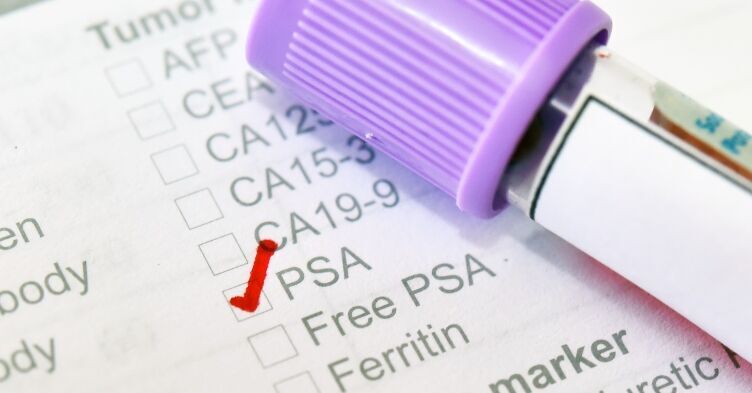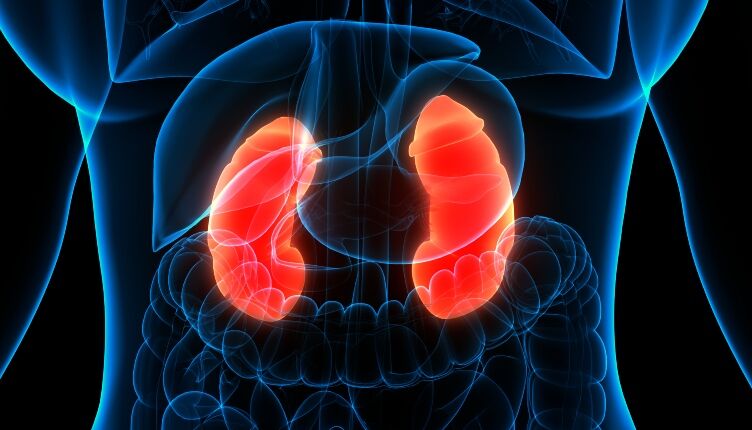Managing chronic kidney disease in primary care

Key learning points:
– Chronic kidney disease is a common condition that is frequently encountered in primary care
– Primary care nurses are in a prime position to identify those at risk of chronic kidney disease and its complications
– It is often associated with other lifestyle related long-term conditions and a significant opportunity exists to provide education and monitoring to prevent progression to end stage renal failure
Chronic kidney disease (CKD) is defined as an abnormality of kidney function or structure present for more than three months,1 and has been increasingly recognised as a significant global public health problem.2,3,4
Since estimated glomerular filtration rate (eGFR) recording was implemented on all urea and electrolyte blood samples in the UK in 2006, the scale of the problems has become clearer.5 Attention has been increasingly focused on early stage disease management in an attempt to slow or prevent progression to renal failure and modify associated cardiovascular risk.1,6
UK prevalence rates are estimated to be around 6-8%, and increase with age, diabetes mellitus and cardiovascular disease.3,4 Only around 4% of individuals with early CKD will progress to requiring dialysis treatment. However, it is estimated that a much larger proportion, around 46% will suffer mortality over a five year period due to related cardiovascular events.1
Causes
Underlying disease processes in CKD are various and wide ranging, the disease is often found alongside a number of other long-term conditions such as diabetes mellitus and cardiovascular disease, conditions that both have the potential to lead to renal damage.
There are a number of primary renal diseases and multisystem diseases, such as Immunoglobulin A (IgA) nephropathy, lupus and vasculitis that can cause inflammation and damage to the glomerular tissue in the kidney.
Underlying urological conditions can also lead to CKD obstructions caused by congenital malformations of the urinary tract, prostatic enlargement and renal calculi can all be indicated in the development of CKD. In addition, there are a number of hereditary conditions such as polycystic kidney disease, alports syndrome that can lead to CKD.7
Signs and symptoms
Table 1 outlines the stages of CKD and the symptoms and complications associated with each stage. It is important to remember that mild to moderate CKD often produces very little in the way of symptoms. It’s usually identified by the presence of protein in the urine or by elevated blood creatinine levels. Therefore it is important that those at increased risk of CKD development such as individuals with diabetes and hypertension are screened vigilantly for signs of CKD development. This includes monitoring of urea and electrolytes (Us and Es) for signs of creatinine rise or fall in eGFR, and urinalysis and urinary albumin creatinine ratio (ACR) for signs of microproteinuria development.1,8
Related Article: Overactive bladder – what nurses in primary care need to know
In stage 4-5 the individual may start to complain of symptoms of nausea, extreme fatigue, loss of appetite, itching and shortness of breath. Oedema may be noted.

Diagnosis
A diagnosis of CKD can be made when the glomerular filtration rate (GFR) is measured at less than 60 ml/min/1.73 m2 on at least two separate occasions that are a minimum of 90 days apart.1 GFR refers to the amount of blood per minute filtered by the glomeruli within the kidney. Calculations of the eGFR should be available on all urea and electrolyte sample results. It should be remembered that an eGFR is only an estimate and may be affected by muscle mass, age, sex and ethnicity. An Isotope GFR provides greater accuracy. This is an investigation normally undertaken in secondary care.
Microalbuminuria and proteinuria on urinalysis sampling are early signs of renal disease.9 Microalbuminuria is defined by an increase in the loss of albumin via the urine to between 30-300mg/day. This sample should be obtained from the first urine void of the day. An ACR of more than 2.5mg/mmol in men and more than 3.5mg/mmol in women is often used to diagnose microalbuminuria. An elevated ACR can be an early sign of diabetic kidney disease.1,6,8
All individuals with diabetes should be screened annually for the presence of microalbuminuria via a laboratory ACR. This is best done on the first voided urine of the day. It should be noted that urinary tract infection may also precipitate the presence of protein on urinalysis, therefore this should be ruled out.1,6,8
The identification and quantification of protein in the urine is important as it provides clues to the underlying disease process and predicts the likelihood of disease progression. The presence of proteinuria may also alter the management.1,6
Once a diagnosis of CKD is established, the underlying cause should be investigated as far as possible. A renal ultrasound is a useful investigative procedure and helps to establish or rule out the existence of renal vascular disease. If the kidneys are asymmetrical a stenosis in the renal artery may be indicated.6
While some cases of CKD can be managed in primary care, referral to a specialist nephrology service should be considered in a number of circumstances. These include in cases when the cause of CKD is not clear or appears progressive, primary renal disease or multisystem disease is suspected.1,6
Treatment and symptom management
Treatment focuses on prevention of disease progression, prevention of episodes of acute kidney injury (AKI), and management of associated disorders.1,6
Hypertension control represents a key target for intervention to prevent disease progression. Blood pressure control becomes even more important in the presence of proteinuria. Blood pressure targets for those with proteinuria and chronic kidney disease suggest a systolic blood pressure of no greater than 130mmHg for these individuals.1,6
Antihypertensives of choice for those with proteinuric disease focus on angiotensin converting enzyme inhibitors (ACEi), such as ramipril, and angiotensin receptor blockers (ARB), such as candesartan. These are known to offer some renal protection from the effects of proteinuria.1,6
Care should be taken, however, these medications may not be suitable for individuals with vascular disease or known renal artery stenosis as they may cause a decline in renal function and hyperkalaemia. Us and Es should be checked seven to 10 days after commencement of an ACEi or ARB to observe its effects on serum potassium and renal function.1,6 Many individuals will require multiple anti-hypertensive agents to control hypertension.
Hyperglycaemia is a major risk factor for disease progression in those with diabetes mellitus. It should be remembered that metformin should be reconsidered once the creatinine reaches 150umol/l in men and 130umol/l in women due to the risk of acidosis. Targets for HbAlc to prevent renal progression are suggested to be 53mmol/mol.8
Anaemia associated with renal disease can be treated through the use of erythropoietin stimulating agents (ESA). These are administered via the subcutaneous route. Monitoring of the haemoglobin is useful to ensure that the dose and frequency is correct. Iron deficiency may be detected through monitoring serum ferritin levels. In some cases, simple oral iron tablets can be enough to rectify this, however in others it may be necessary to administer iron via the intravenous route. In order for an ESA to be of benefit, the patient requires to have adequate irons stores with a ferritin level of around 200ug/l.1,8
Elevated phosphate levels are more evident in patients who are progressing through the stages of CKD. It is important to monitor and treat the phosphate levels in order to avoid high serum phosphate levels that can lead to metabolic bone disorders. The consequences of this can be increased risk of fractures and soft tissue calcification.9
Under the direction of a renal dietician, dietary phosphate intake can be monitored. Should the restriction of high phosphate foods (such as dairy products) not improve the phosphate level, then medication can be introduced in the form of phosphate binders. It is important to ensure that the patient knows how to take their particular phosphate binder. This is often immediately prior to, during or after a meal so that maximum phosphate binding effect can be achieved.10
Other lifestyle factors are known to have an impact on CKD progression including smoking and obesity, either individually or by relation to other associated factors. Cardiovascular risk estimation and lipid management form important aspects of management for those with CKD. Primary care nurses are well placed to offer support or appropriate sign-posting to other services.1
Acute kidney injury
Individuals with underlying CKD are at increased risk of developing an acute kidney injury (AKI – formerly known as acute renal failure). It is important that primary care professionals are aware of the possible risk factors that may precipitate AKI and be aware of the actions required to reduce these risks.11
Clinically AKI can be recognised by deteriorating biochemistry (creatinine level rise and eGFR fall), severe cases may result in the onset of oliguria and anuria. Unrecognised and untreated, AKI can result in uraemia, acidosis, hyperkalaemia and ultimately death.11
Related Article: Call for more conversations with men at high-risk for prostate cancer
The main factors leading to acute kidney injury in those with underlying CKD include hypovolaemia, often associated with dehydration, infection or sepsis and nephrotoxic medication. Often combinations of these factors are implicated.11
Individuals with CKD should be advised to seek medical advice should they suffer diarrhoeal illness. Fluid status should be assessed and the use of diuretic and antihypertensive medications should be reviewed and possibly suspended temporarily.
Infection, and in particular, urinary tract infection and respiratory infections are often implicated in the development of AKI, careful choice of antimicrobials is required. The metabolides of antibiotics are normally excreted by the kidney and toxicity can result unless the dose is decreased, which is the case for commonly used trimethoprim. Life threatening hyperkalaemia can result from Trimethoprim toxicity and as such, the dose should be reduced as per British National Formulary guidelines.10 Nitrofurantoin should be avoided altogether.10
Other commonly used medications, which have a nephrotoxic element, include non-steroidal anti-inflammatories such as Ibuprofen.10 It is advised that the use of non steroidals should be avoided in those with renal impairment if at all possible, or used with caution at the lowest possible dose under medical supervision. It is important to remember that these medications are readily available over the counter and patients should be advised accordingly.
Careful monitoring of bloods to include Us and Es and bicarbonate should be performed in patients were an acute kidney injury is suspected or likely.
Conclusion
CKD is a complex condition with a number of stages and underlying conditions. An understanding of diagnosis and the complications likely to be encountered at each stage is important to prevent the development of associated complications.
Awareness and early detection of CKD and those at risk of AKI can significantly improve outcomes. Clinical guidelines1,6 provide an invaluable information resource and can guide the management of CKD in primary care.
References
1. National Institute for Clinical Excellence. Chronic kidney disease in adults: assessment and management (CG182), 2014. nice.org.uk/guidance/cg182 (accessed 3 December 2015).
2. Levey A, Atkins R, Coresh J et al. Chronic kidney disease as a global public health problem: Approaches and initiatives – a position statement from Kidney Disease Improving Global Outcomes CKD as a global public health problem: Approach. Kidney International 2007;72(3):247-259.
3. Roderick P, Roth M, Mindell J. Prevalence of chronic kidney disease in England: Findings from the 2009 Health Survey for England. Journal of Epidemiology and Community Health 2011;64(2):A1-A40.
4. Stevens PE, O’Donoghue DJ, de Lusignan S et al. Kidney disease management in the United Kingdom: NEOERICA project results. Kidney International 1997;72(1):92-99.
5. Renal Association. Continuing good CKD management, 2007 (online). renal.org/docs/default-source/guidelines-resources/National_leaflet_about_CKD_and_eGFR_for_GPs_updated_September_2007.pdf (accessed 3 December 2015).
Related Article: Urgent action needed to address UK kidney health inequalities
6. Scottish Intercollegiate Guideline Network. 103. Diagnosis and Management of Chronic Kidney Disease. Edinburgh: SIGN; 2008
7. Johnson R, Feehally J, Floege J. Comprehensive Clinical Nephrology, 4th Ed. Missouri: Elsveveir-Sauders, 2010.
8. National Institute for Clinical Excellence. Type 2 diabetes: The management of type 2 Diabetes, 2009. nice.org.uk/guidance/cg87 (accessed 3 December 2015).
9. O’Callaghan C. The Renal System at a Glance. 2nd Ed. Oxford: Blackwell Publishing; 2006.
10. Joint Formulary Committee (British Medical Association and Royal Pharmaceutical Society). British National Formulary 69. London: BMJ Group and Pharmaceutical Press. March 2015 b- September 2015.
11. National Institute for Clinical Excellence. Acute Kidney Injury: prevention, detection and management (CG169), 2013. nice.org.uk/guidance/cg169 (accessed 3 December 2015).

See how our symptom tool can help you make better sense of patient presentations
Click here to search a symptom


Chronic kidney disease is defined as an abnormality of kidney function or structure present for more than three months, and has been increasingly recognised as a significant global public health problem



